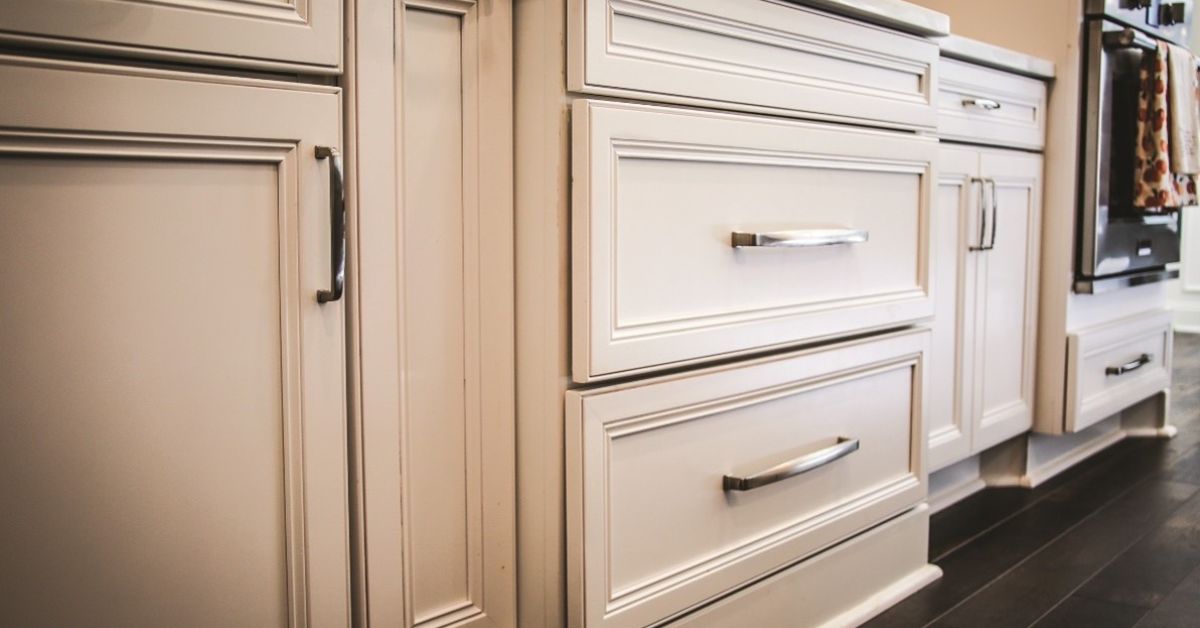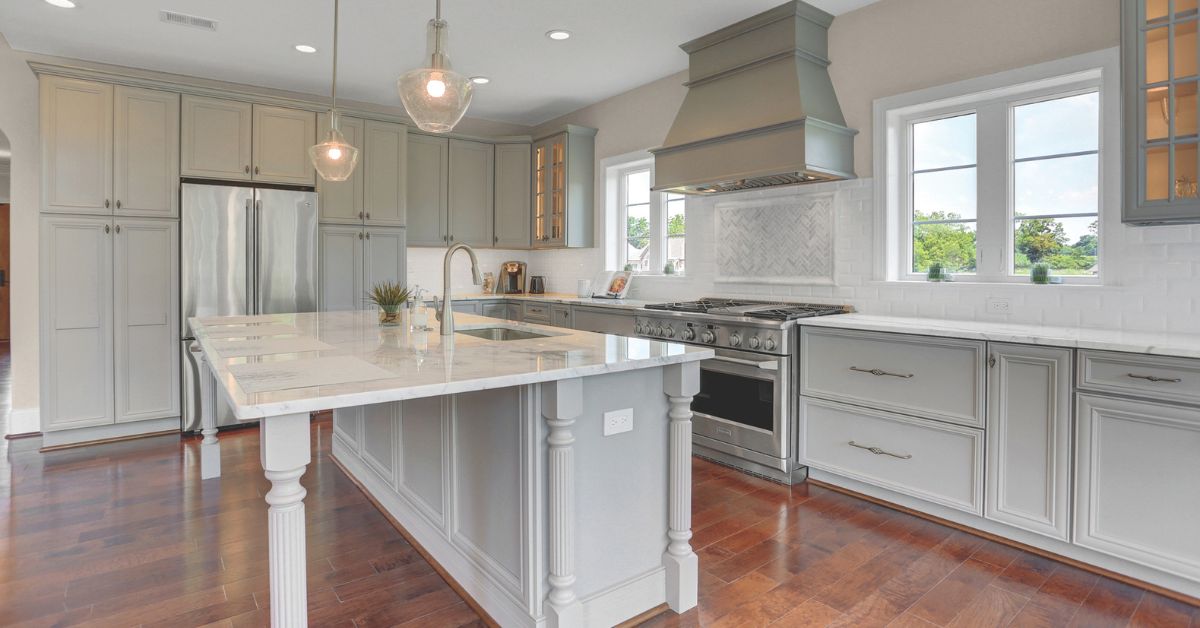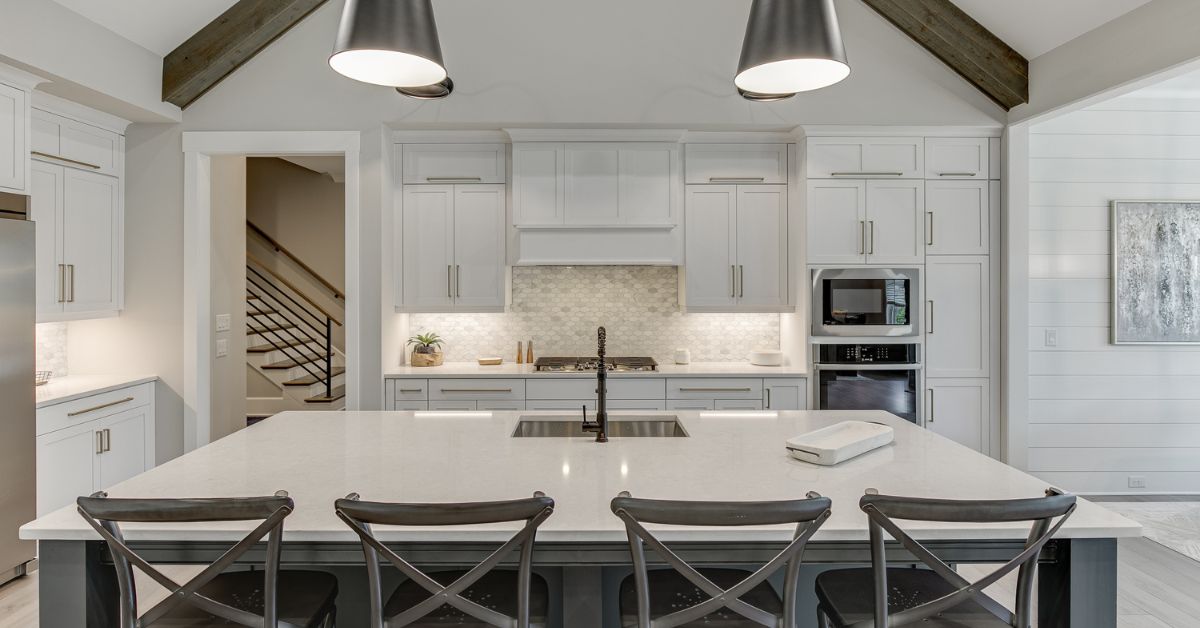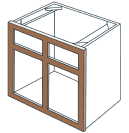Differences Between Framed and Frameless Cabinets

A critical consideration when selecting new cabinets is determining whether to opt for framed or frameless cabinets. Each type carries unique structural characteristics, aesthetic values, and practical benefits, ready to suit individual needs and tastes. This article provides an in-depth overview of the differences between framed and frameless cabinets and a guide to making an informed choice for your kitchen or other storage spaces.
Framed Cabinets
Framed cabinets use a traditional design incorporating a frame on the front of the cabinet box. The frame, also known as a face frame, typically consists of solid wood and outlines the cabinet’s front edges. This frame serves as a mounting surface for hinges and doors.
Framed cabinets feature visible borders that create a classic appearance. Therefore, framed cabinets provide added reinforcement, making the overall structure sturdy and long-lasting. They allow for more flexibility with door overlays, meaning homeowners can use these cabinets in partial, full, or inset door styles within traditional and transitional construction styles.
Framed cabinets generally offer excellent durability because the face frame adds structural stability, helping the cabinet resist potential warping or damage over time. While many value framed cabinets’ durability, this framing does result in slightly less interior storage space because the frame takes up some of the inner cabinet’s accessible room.
Framed cabinets are popular with homeowners who appreciate timeless aesthetics and require adaptable door style options. Their structural makeup makes them an ideal choice for enduring utility while supporting a variety of design preferences.
Frameless Cabinets
Frameless cabinets, often referred to as full-access cabinets, do not have a face frame. The doors mount directly onto the cabinet box. This streamlined structure eliminates visible borders on the front, contributing to a sleek and minimalist look.
This cabinet design is popular in modern and European-style kitchen cabinets, where clean lines and seamless aesthetics take precedence. Frameless cabinets offer a contemporary appeal, often suiting kitchens with open layouts or spaces emphasizing simplicity.
Since the absence of the face frame provides unobstructed access to the cabinet interior, frameless cabinets often offer slightly more usable storage space than their framed counterparts. With virtually no internal barriers, retrieving and organizing items inside becomes easier.
Frameless cabinets utilize thicker box materials to maintain structural integrity without needing additional support from a frame, meaning they are generally sturdy and reliable when crafted with high-quality components. However, installation requires meticulous alignment to ensure proper door functionality and overall stability because they rely entirely on the box material for support.
These cabinets are ideal for homeowners who value seamless design and maximized storage potential. They are also a good fit in spaces where achieving a modern, polished look is a top priority.

Comparing Aesthetics and Style
The aesthetic differences between framed and frameless cabinets that can range from minimal to striking. Framed cabinets are the epitome of tradition and charm, giving a nod to more classic design elements. Homeowners can leave the visible frame exposed for versatile styling, matching well with decorative finishes or intricate detailing for a timeless appearance.
On the other hand, frameless cabinets generally embody a more modern vision. The absence of the face frame creates a flush, unified look. Contractors mount the doors edge-to-edge, leaving no gaps or visible borders. This type of build results in a minimalist visual effect unmatched by other cabinet styles, making them suitable for contemporary homes with a preference for streamlined elegance.
The choice hinges on personal design tastes. Those seeking warm textures and a classic feel often gravitate toward framed options, while those aiming for a contemporary design statement typically choose frameless cabinets.
Storage Opportunities
Storage capability is often an important factor in kitchen cabinet decision-making. Framed and frameless cabinets offer distinct advantages.
Framed cabinets inherently lose a small amount of interior space due to the face frame, especially in smaller or narrow cabinets. However, creative shelving or organizing solutions can minimize this impact. Homeowners can tailor cabinet drawers and accessories to maximize efficiency despite the cabinets’ slightly reduced interior measurements.
Frameless cabinets cater to those needing maximum storage space. With no frame to limit the opening, access to the interior is seamless. Additionally, the lack of a center stile allows for full access to the cabinet’s interior. Shelves are wider, allowing users to utilize the full depth of the cabinet box. This advantage is particularly noticeable in tight kitchens where optimizing every inch is critical. The larger opening also allows for a wider drawer box in the frameless cabinetry compared to the framed cabinets of the exact same width.
Ultimately, storage needs and preferred cabinet functionality will determine which type is most effective.
Installation and Alignment
The assembly and installation process can also significantly vary depending on whether the homeowner chooses framed or frameless cabinets. Framed cabinets rely on the face frame for support, giving them slightly more allowance for installation misalignments. This reliance makes them more forgiving during installation and ensures long-term performance, even in less-than-ideal conditions.
Frameless cabinets demand precise alignment. Since they lack the additional support of a face frame, accurate measurements, and meticulous positioning are critical. Poor alignment can interfere with how doors and drawers operate, potentially compromising the cabinet’s long-term integrity.
It’s important to factor in installation complexity and contractor capability when deciding which option best suits your kitchen project.

Quality and Durability
Both framed and frameless cabinets offer durability when made with high-quality materials and proper craftsmanship. However, their strength and wear resistance come from different features.
The face frame reinforces framed cabinets, providing stability and aiding in resisting warping or damage. This reinforcement makes them a reliable option for kitchens with heavy use or homes exposed to fluctuating humidity or temperatures.
Frameless cabinets achieve durability through thicker box materials. Their simplified design eliminates the large frame, but they rely on premium materials for structural support. Properly crafted frameless cabinets can perform as effectively as framed designs in maintaining strength and longevity.
The quality of the build and the provider’s expertise should remain top considerations when choosing lasting cabinetry.
Aligning Personal Preferences With Functionality
While structural and stylistic characteristics are vital, aligning cabinet types with your unique preferences and practical needs is essential. Knowing how you use your kitchen daily can help guide your selection.
Homeowners who value customizable designs and classic elegance naturally lean toward framed cabinets. Their adaptability to a range of overlay styles and finishes makes them versatile, blending seamlessly into various home environments.
Those prioritizing sleekness, simplicity, and optimal storage opt for frameless designs. They deliver a modern aesthetic and maximize organizing potential within limited spaces, aligning with the minimalist lifestyles many embrace today.
Carefully weighing how each cabinet type aligns with your intended usage, aesthetic goals, and size requirements will ensure a more satisfying decision.
Final Thoughts for Making the Best Cabinet Choice
The differences between framed and frameless cabinets go far beyond appearance. Each option provides unique advantages, from distinct structural builds to storage considerations and alignment challenges. There is no one-size-fits-all answer, whether you desire the timeless appeal of framed cabinets or the modern efficiency of frameless ones.
Choosing the best cabinets involves understanding your style, space constraints, and functional needs. You can select cabinetry that complements your lifestyle while enhancing your kitchen space by evaluating these factors in-depth.
Consult experienced professionals who specialize in guiding homeowners through the cabinetry selection process for further assistance exploring European-style kitchen cabinets and other options that fit your vision. Expert advice can ensure you create a functional and visually stunning kitchen design that stands the test of time.












